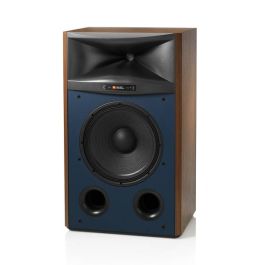Yes so! Hey, there is nothing very special about the 4367, and it's certainly not unique. The "white paper" for it is a marketing piece in disguise, if i ever saw one.... But i'm not here to bash the speaker....it's the lofty/pricey assessments i take issue with.Anyway, my response to @gnarly was about his claim that JBL 4367 is too expensive and it is easy to design, build and sell the 4367 clone at much lower price. Not so!
While a horn/CD over 15" reflex speaker may not be so common for small studio use, it is perhaps the most common speaker type in live and theatre sound (for smaller audiences). Certainly the most common if you also include over 12".
For less than half the price of the 4367, in the proaudio live/install world, one should expect a horn/CD over 15" will come with internal bi-amplification, DSP processing often including FIR, RMS and peak limiting to maintain clean sound at SPL, adjustable EQ's, perhaps with remote monitoring and control, and often with presets for use in various boundary conditions.
We're talking from numerous major worldwide companies with all the R&D and various forms of overhead that Harman has....
Numerous companies in competition for a much broader marketplace than a specific studio niche.
I seriously doubt the 4367 has noticeably better SQ than the better offerings in that broader market place.
I believe the 4367 is designed and priced to a very narrow market segment whose members lack broader exposure to equivalent alternatives.
It's the only way JBL can get away with such a price imho. It's also probably the only market segment that can live with the asymmetrical pattern-flip horn.
Anybody who thinks the 4367 sounds great, would benefit going to a major pro-sound convention like Infocomm or Namm (as found in the US).
There is a lot to choose from....and a lot of money to save

